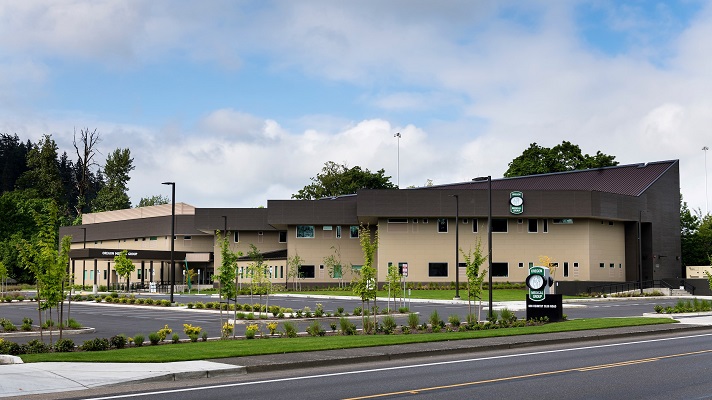Real-time locating system reduces wait times by 75% at Oregon Medical Group

Oregon Medical Group.
In April 2017, Oregon Medical Group opened its largest clinic, known as Country Club Road. It’s a 47,000-square-foot, two-level building comprising seven specialties, imaging and lab services.
THE PROBLEM
With a remodel and expansion of existing construction, the operations team faced challenges related to building layout and design, single registration/check-in area for all departments, no clear line of sight from medical assistant areas to exam rooms, and no baseline data for maximizing value-added time for patients.
The overarching goal was to ensure the patient received the appropriate care, with the right care provider, at the right time.
PROPOSAL
So Oregon Medical Group implemented real-time locating system (RTLS) technology using CenTrak hardware and Intelligent InSites software. The technologies were chosen in order to be able to design workflow, seamlessly gather data, and drive engagement to provide value to patients and staff, said Steve Liu, director of IT at Oregon Medical Group.
MARKETPLACE
There are many vendors of real-time location system technology on the market today, such as CenTrak, GE Healthcare, Hewlett-Packard, Midmark RTLS, Mojix, Siemens, Skytron, Stanley Healthcare and Zebra Manufacturing Solutions.
MEETING THE CHALLENGE
The complete system is a combination of hardware that provides room-level location accuracy, and a software solution to drive patient flow and collect data.
“Every Oregon Medical Group clinical team member, and every patient seen at the Country Club Road clinic, wears a CenTrak badge,” Liu explained. “The badge simply reports the location status of the individual back to the Intelligent InSites platform, and the pre-designed workflows are triggered based on patient movement and staff location in relation to the patient, then displayed through the software viewed by front office and clinical staff.”
In order for patient- and appointment-specific information to display and be captured by the software, the medical group built a custom application to extract data from the appointment scheduling component of the EHR/practice management application and send the relevant information via a standard HL7 interface to the Intelligent InSites software. The medical group has branded the combined system as ClinicTrak.
"Post self-rooming implementation, the data captured showed a reduction in steps from 23,000 to 9,000. That equates to approximately 1.5 hours of walking time that was saved."
Steve Liu, Oregon Medical Group
“Since going live, Oregon Medical Group has further improved the patient flow and utilized the system to allow patients to room themselves once checked in and assigned a badge,” Liu explained. “This has proven to be a huge success, with significant increases in value-added time for the patient and reduction in overall wait times.”
Staff and provider satisfaction also has increased because of less time spent walking back and forth to escort patients from waiting areas, and more time providing medical care, he added.
RESULTS
With the RTLS hardware and software system in place, Oregon Medical Group has seen a 75 percent decrease in patient wait times, a 50 percent increase in face-to-face time with care teams, and a 60 percent reduction in the number of steps taken by medical assistants daily.
“Prior to implementing self-rooming, baseline measurements were established, including steps taken by medical assistants, time with a medical assistant, and time with a provider,” Liu said. “Post self-rooming implementation, the data captured showed a reduction in steps from 23,000 to 9,000. That equates to approximately 1.5 hours of walking time that was saved.”
The value to the patient was visible as a 50 percent increase in time spent with the medical assistant and on average 75 percent less time spent waiting prior to contact with a member of the care team, he added.
“Patient face time with a physician also increased by up to an additional five minutes, within a 15-30 minute appointment,” he said. “Staff reported increased satisfaction, consistent understanding of where the patient was, and reduced stress from being ready for the physician at the right time.”
ADVICE FOR OTHERS
“Be very clear on your objectives and how the technology will achieve those goals,” Liu advised. “Communicate to executive leadership on what those expectations are and, more important, what the system will not do. Involve the staff that do the work to help design the workflows, and have a mechanism for garnering ideas for improvement opportunities.”
Twitter: @SiwickiHealthIT
Email the writer: bill.siwicki@himssmedia.com

























